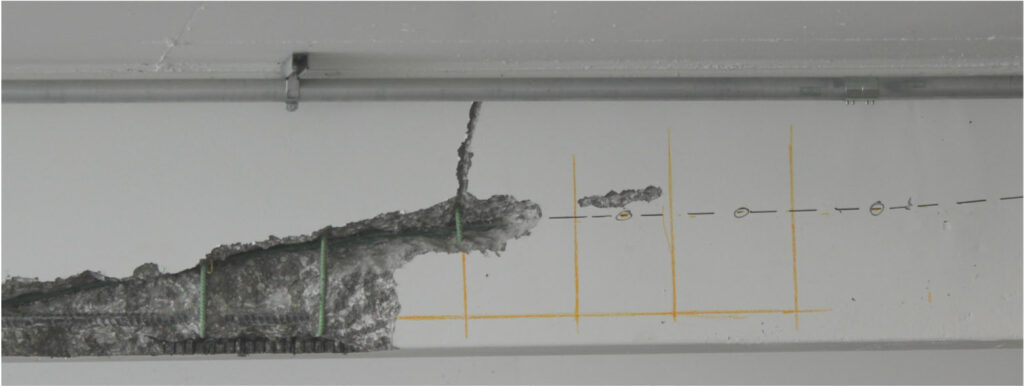RainierGPR Service Areas: Expert Concrete Scanning in Your Region
Concrete Scanning: An Essential Action Towards Guaranteeing Structural Honesty and Security
In the realm of building and infrastructure maintenance, the relevance of concrete scanning can not be overemphasized. By employing advanced modern technology and techniques, concrete scanning offers as an essential device in making certain that the stability and safety of buildings and bridges are upheld to the highest possible criteria.
Significance of Concrete Scanning
Concrete scanning plays a critical role in ensuring the structural integrity and safety of buildings and infrastructure jobs. By making use of innovative innovations such as ground-penetrating radar (GPR) and electro-magnetic induction, professionals can non-destructively check concrete structures to detect prospective problems, gaps, ingrained objects, and reinforcement design. This procedure makes it possible for early detection of abnormalities that could jeopardize the security of a framework, preventing expensive problems and ensuring the security of residents.
Before boring, reducing, or coring right into concrete, scanning helps recognize the precise areas of rebar, post-tension cords, and other embedded aspects, minimizing the risk of accidental hits that can lead to architectural weaknesses. Additionally, concrete scanning help in high quality control by validating the density of concrete covers and identifying any kind of inconsistencies that may affect the total resilience of the structure.
Modern Technology for Concrete Inspection

Advantages of Very Early Discovery
Timely detection of architectural issues can dramatically reduce threats and guarantee the longevity of building tasks. By identifying possible troubles at an early stage in the building and construction process, stakeholders can take positive measures to resolve problems before they rise into bigger and extra pricey issues. One of the crucial benefits of early discovery is the avoidance of structural failures, which can posture severe security risks and result in project hold-ups and monetary losses.
Additionally, very early detection permits timely repairs and maintenance, which can help prolong the life expectancy of the framework. By addressing concerns quickly, building groups can prevent pricey repair services or even the demand for early replacement of structural parts. This positive strategy not just conserves money and time but also enhances the total security and toughness of the construction job.
Additionally, very early detection can boost project planning and decision-making by supplying stakeholders with valuable insights right into the problem of the structure. Armed with this information, task managers can make educated choices regarding building and construction approaches, products, and timelines, causing more efficient and successful project results.
Making Sure Architectural Security
Guaranteeing the structural click to find out more stability of a building task is paramount to its security and long life. Concrete scanning plays an important role in making right here sure architectural stability by finding possible concerns such as voids, delamination, or support deterioration that might compromise the integrity of the structure over time.
By making use of sophisticated scanning innovations like ground-penetrating radar (GPR) and electromagnetic induction, construction experts can non-invasively evaluate concrete frameworks to recognize locations of concern beneath the surface. This aggressive approach allows for the very early detection of flaws or weaknesses, making it possible for punctual fixings or support to protect against architectural failures.
Normal concrete scanning throughout different building phases and throughout the life process of a structure can help maintain its stability, mitigate risks, and make certain the safety and security of passengers. By focusing on structural stability through concrete scanning, construction tasks can boost their strength and longevity, inevitably adding to higher security and durability.
Protecting Against Crucial Failings
Implementing regular inspections, such as concrete scanning, can expose surprise problems like gaps, splits, or corrosion that can endanger the integrity of a structure. By using sophisticated scanning innovations like Ground Passing through Radar (GPR) or Concrete X-ray, designers can non-destructively examine the problem of concrete and determine weak factors that need support or repair work.

Conclusion
To Continue conclude, concrete scanning plays an important function in making sure architectural stability and security by using sophisticated innovation for early detection of prospective problems. This aggressive strategy helps stop crucial failings and makes certain the stability of frameworks. It is important to prioritize concrete evaluation as a conventional method to secure the long life and safety and security of buildings and framework.
Concrete scanning plays an important duty in ensuring the structural integrity and safety of buildings and facilities projects. In addition, concrete scanning help in quality control by validating the density of concrete covers and finding any type of discrepancies that might affect the total sturdiness of the framework. Concrete scanning plays a critical function in ensuring architectural stability by spotting possible problems such as voids, delamination, or support rust that might endanger the stability of the structure over time.

In final thought, concrete scanning plays an essential duty in ensuring architectural integrity and security by utilizing advanced technology for early detection of possible issues.